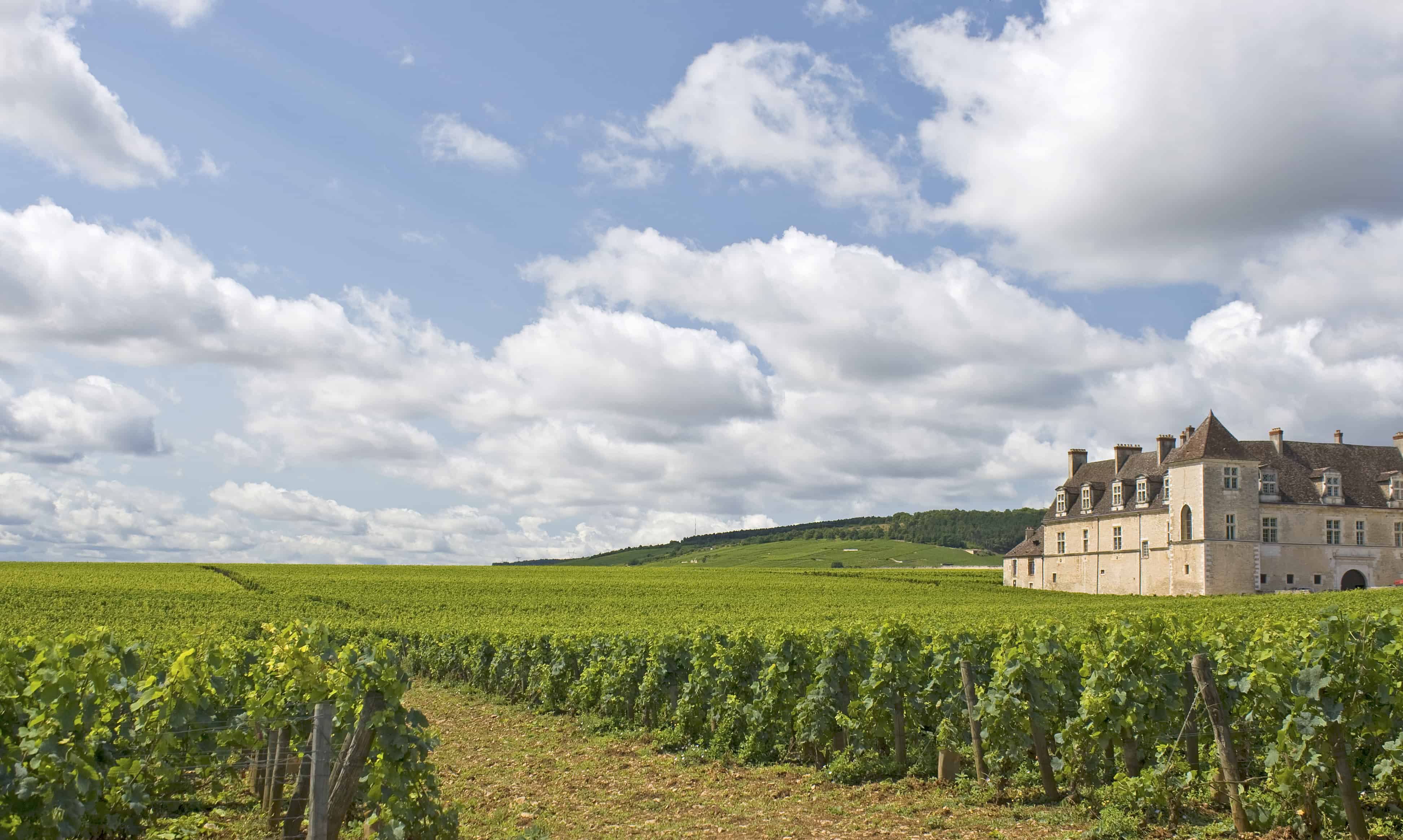 Adobe Stock
Adobe Stock
Words by Katie Hammel
IT'S THE TYPE OF PLAYGROUND MANY ADULTS dream of finding; a candlelit, comfortably cool cave filled top to bottom with some of France’s finest wines. Yet there we were, my husband Dan and I, turned loose to sip our way through a cellar in Burgundy’s wine country.
Beaune, a medieval walled town surrounded by vineyards, is home to said playground – the Marché aux Vins, located in the cellar of a former Franciscan church where travellers like us spend hours enjoying a self-service wine tasting. As we paid, I asked the cashier if there was a time limit on our visit. “No, of course not,” she replied. “Wine is to be savoured. Take your time. Enjoy.”
And so, we did. We wandered through, helping ourselves to tastes of six different wines, trying to identify the smells and flavours, and revisiting our favourites. Despite knowing it was perfectly OK, we couldn’t help but giggle like naughty school children at the thought that we’d been released into a cellar stocked with so much wine.
We’d made our way here not only to learn about Burgundy’s famed vintages, but to relish France’s culinary pleasures. Burgundian food is slow food; beef braised in red wine, cheese aged until it’s pungent and creamy. Even the word “Burgundian” has a slow romance about it, rolling off the tongue like the vine-covered hills that dot its countryside.
That same day, lingering over a three-hour dinner at family-run Ma Cuisine, we got a taste of that slow food – beef bourguignon, garlicky escargot and delicate œufs meurette, eggs poached in red wine – and unhurried pace. As the restaurant began to empty, I worried that we were overstaying our welcome, so I asked the waiter what time they closed. “Whenever everyone leaves,” he replied. “Would you like another bottle of wine?”
I decided this laissez-faire attitude was something I could get used to.
 Adobe Stock
Adobe Stock
In Beaune, we stumbled upon Sensation Vin, a small wine shop that offers tastings accompanied by an in-depth lesson on the region, its classification system, and how to read a Burgundy wine label. Our host explained that Burgundy is comprised of five main wine regions, which mostly produce pinot noir and chardonnay. Within these regions, every vineyard has been rated according to the quality of wine it’s capable of producing based on location, elevation, sun exposure and soil type.
The highest-rated vineyards are classified as “Premier Cru” and the best of the best are “Grand Cru.” The labels of these wines specify the name of the vineyard the grapes come from. Other wines are classified by village (the label will say the village it comes from, but not the specific vineyard) or simply Burgundy (meaning the grapes come from any given area within the region).
“Grand Cru doesn’t automatically mean it’s the best,” our host explained. “Grand Cru designates the potential of the vineyard, not the quality of the wine. There are winemakers creating extraordinary village wines, and these can be a great value.”
To prove her point, she led us through a tasting of four pinot noirs and four chardonnays, but didn’t reveal the bottles until after we’d discussed each one and declared our favourites. Dan and I were both surprised to find that we enjoyed several village wines more than some Grand Cru and Premier Cru wines.
“In the end,” our host reminded us, “what really matters is what you like best.”
Empowered to explore with a new understanding of the classification system and more confidence in our own preferences, the next day we packed up some goods we’d purchased at the town farmers' market – plus a corkscrew and glasses, of course – and hopped on rental bikes to explore a portion of the Route of the Grand Crus. This 60-kilometre bike trail runs through vineyards and several small towns, avoiding busy roads and sticking
to the single-track paved paths used by workers to tend their vines.
From Beaune, we cycled 10 kilometres south to Meursault, stopping frequently for photos of the vineyards surrounded by stone walls, tiny villages tucked into the hills, and workers and their horses ploughing the soil. We arrived just as shops were closing for their two-hour lunch break so, forced to abandon any plans for shopping or wine tasting, we settled in for a leisurely picnic lunch of delightfully stinky cheese, bread and cured sausage.
After heading a few kilometres back north to Pommard, we parked our bikes in front of the 18th- century Église Saint Pierre et Sainte Agnès church in the centre of town. I noticed a large brick building across the street, its iron gate bookended by wine barrels. A sign read: Serge and Vincent Lahaye Viticulteurs, Dégustation, Vente. I don’t remember much of my high-school French but I knew it translated to say “winemakers, tasting, sales.” Plus, I know a winery when I see one.
 Adobe Stock
Adobe Stock
Or do I? Regardless, we knew it would be an adventure, if nothing else, and after ringing the bell and being greeted by a short, white-haired septuagenarian, my broken French got us in the front door. He led us into a large courtyard, through a heavy rubber curtain, past rows of wine barrels, and into a small room filled floor-to-ceiling with thousands of bottles.
How he decided which to choose for our tasting, I’m not entirely sure, but he pulled three different pinot noirs from the racks and poured three glasses from the first – one for each Dan and me, and one for himself. The wine was silky smooth, with a hint of ripe fruit and a rich earthiness. As we stood around the table in the small room sampling each of the different varietals, time seemed to slow down. Using pantomime and the shared language of wine, we made small talk with our host as best we could and savoured every sip.
I picked up one of the bottles and remarked to Dan that is was simply designated a Pommard wine, which meant all the grapes came from this town, but not from a Premier or Grand Cru parcel of land. It might not have been the highest rated, but it was delicious. We purchased three to take with us before making our way back onto the street.
Dan and I agreed that it was possible we had just walked up to someone’s home and demanded wine, though given his attentiveness, we decided our host didn’t have anywhere else to be.
We didn’t either, so we continued our slow ride back to Beaune. In Volnay, under
the arms of a large oak tree, we rested our legs on a park bench and opened one of the bottles, drinking it slowly as the sun began to dip lower over the vines.
Just as we’d hoped, we’d learned a lot about wine during our time in Burgundy, but we’d learned just as much about how to enjoy it.
When you go:

What to do
Don’t miss a visit to the 15th-century Hôtel Dieu (Hospices de Beaune). With its Flemish architecture, including intricate woodwork and a glazed tile roof, it’s Beaune’s most recognizable building. It now houses three museums: the Hôtel- Dieu Museum, Burgundy Wine Museum and Museum of Fine Arts. For more foodie fun, head to the Beaune outpost of famous mustard producer Edmond Fallot, which offers guided tours and free tastings of more than a dozen varieties of mustard.
Where to stay
Located in the heart of Beaune in two private mansions set among two 16th century courtyards, the five-star Hotel le Cep includes 65 rooms and suites decorated with antiques and named for local villages and wines. There’s a small fitness centre and a Michelin-star restaurant, Loiseau des Vignes. Rooms start at €219 per night.
Where to eat
Brasserie le Carnot serves a mix of Burgundian specialities and other French classics such as smoked salmon or seared duck breast. If all the rich French food gets to be too much, opt for a burger or one of their 10 varieties of pizza.



